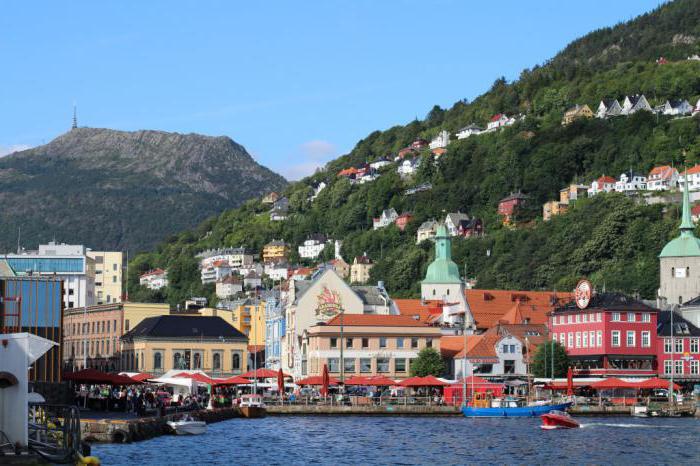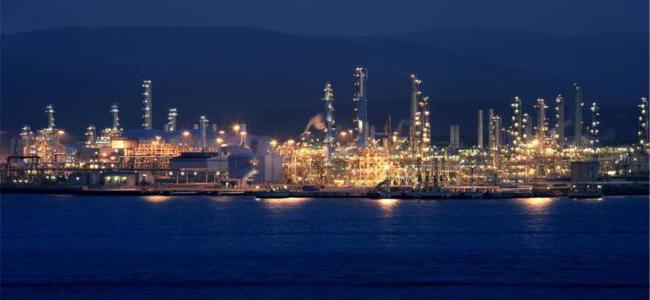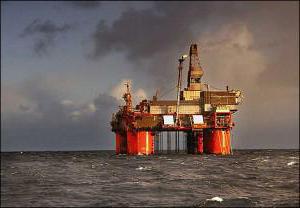The northern country of Norway is known for its high standard of living. The country is experiencing relatively easy global financial crisis, and the economy shows stability and positive momentum. What is the difference between the Norwegian economy and other European countries? Let's talk about the features of the Norwegian economy, its structure, and prospects.
Geography of norway
The economy of Norway in a sense is due to the geographical position of the country. The state is located in the western part of the Scandinavian Peninsula, in Northern Europe. It strongly depends on the seas with which it is washed. The coastline of the country is 25 thousand kilometers. Norway has access to three seas: the Barents, Norwegian and Northern. The country borders on Sweden, Russia and Finland. The main part is located on the mainland, but its territory also includes a huge (50 thousand) island network, some of which are uninhabited. The coastline of Norway is indented with picturesque fjords. The relief of the main part of the country is mostly mountainous. A mountain range stretches from north to south, which sometimes alternates with elevated plateaus and deep valleys covered with dense forests. The north of the country is occupied by the Arctic tundra. In the south and in the center there is a plateau favorable for agriculture. The country is very rich in fresh waters, there are about 150 thousand lakes and many rivers, the largest of which is Glomma. Norway is not very rich in various minerals, but it has significant reserves of gas, oil, several ores, copper, and lead.

Climate and ecology
Norway is in the influence zone of the warm Gulf Stream and this makes the local climate milder than those located in the same latitude of Alaska and Extreme Siberia. But still, the country's climate is not particularly comfortable for life. The western part of the country is dominated by warm currents and there is a temperate maritime climate with mild winters and short warm summers. There is a large amount of rainfall annually. In July-August, here the air warms up to 18 degrees Celsius, and in winter it does not fall below two degrees below zero. The central part belongs to the zone of temperate continental climate with cold winters and short warm, but not hot summers. In winter, the temperature here averages 10 degrees Celsius, and in summer the air warms up to 15 degrees Celsius. The extreme north of the country is characterized by a subarctic climate, with long, harsh winters and short cold summers. In winter, on average, the thermometer shows minus 20 degrees, and in summer, the thermometer rises to a mark of 10 degrees heat. In the North, there is an atmospheric phenomenon - the northern lights.
In general, the Norwegian economy can be briefly described as green. Great attention is paid here to the preservation of the pristine nature. Although fishing and oil production cause some harm to nature, and so far Norway can not cope. Nevertheless, there is very clean air and water, industrial enterprises operate to high safety standards, which are considered one of the highest in the world. The growth of the tourist flow also poses a certain threat to the country's ecology, and this problem has not yet been resolved either.
The history of economic development
Until the 9th century, Norway was a country of conquerors. The Vikings terrified all of Europe, reaching all the way to the coast of Turkey. The main income of the inhabitants of the country was to collect tribute from the conquered lands. In the 9-11 centuries, vast lands belonging to the Norwegian king went through the path of reform, Christianity is trying to penetrate the region several times, there is a struggle between separate regions, there is unrest among the people. The economy is undergoing major changes. Territories taxed are gradually being reduced; new forms of management were needed. In 1184, the former priest Sverrir came to power, he dealt a powerful blow to the clergy and aristocracy and introduced new principles for the existence of the state - democratic. The next few generations of monarchs were centralizing the country and resolving political strife. At the end of the 13th century, Norway was experiencing a significant agricultural crisis, which is associated with the plague epidemic. This leads to a strong weakening of the state. Since the 14th century, Norway has experienced a long period of dependence on the Scandinavian states. This could not have a positive effect on the development of the economy. The country is increasingly turning into a peripheral state with a weak economy. In the middle of the 17th century, the country was experiencing a serious economic rise due to the collapse of the Hanseatic League. Europe begins to actively consume Norwegian raw materials: timber, ore, ships. Explosive industry growth is taking place. But the country remained part of Sweden. At the beginning of the 19th century, Norway, led by Christian-Friedrich, were able to assert their rights to independence. But not for long. Sweden did not want to part with these territories. And throughout the 19th century there was a struggle to uphold the rights of the Norwegian people to their own government and legislation. At the same time, industrial production is growing, which becomes the platform for the emergence of a wealthy class that did not want to remain under the control of Sweden. In 1905, the country managed to get rid of the influence of Sweden, the Danish prince came to power. During the First World War, the state is neutral, this allows Norway to significantly improve its economy. But the global economic crisis of the late 20s and early 30s did not pass the country. At the beginning of World War II, Norway again decided to remain neutral, but Germany did not pay attention to it and captured the country. The postwar years became the formation of a state with a new economy. Here, to a greater extent than in other European countries, the methods of equitable distribution of income are applied. At this time, the general characteristics of the Norwegian economy can be described in two words: justice and democracy. The country twice refused to join the European Union, although it supports integration processes and the Schengen agreement.

Norwegian population
The population of the country is just over 5 million. The population density is only 16 people per square. km The main population is concentrated in the east of the country, the coastal zone around Oslo is densely populated, as well as in the south and west of the country. The northern and central parts are almost empty, and some of the islands are completely uninhabited. The Norwegian economy today provides high employment. About 75% of the population have jobs. 88% of residents of the country with higher education do not have difficulties with employment, this is the best indicator in Europe. This indicates that the country's economy is developed at a very high level. The growing quality of life of the Norwegians is also indicative of the high quality of life; it averages 82 years.
Political structure
Norway in its political system is a constitutional monarchy. The head of the executive branch of government and the official head of state is the king. The legislature is in charge of a unicameral parliament. The king has a formally large enough list of duties and rights. He appoints and dismisses the prime minister, approves laws, manages war and peace, and heads the supreme court. But almost all the main issues of leadership in the country are dealt with by the government with the prime minister at the head. The executive branch has the right to regulate the Norwegian economy, it controls the work of the public sector of the economy, which is a highly profitable sector of the economy, and also controls the activities of the oil industry. The country is divided into 20 districts called fulke, governors of which are appointed by the king. Fülke is united by communes. A multi-party system operates in the country , and new political movements and parties are constantly appearing, striving to get into parliament. Trade unions, which have great authority, take an active part in the political and administrative life of the country.

General characteristics of the Norwegian economy
In Europe, there are several countries that successfully overcome the financial crisis and find growth opportunities, one of them is Norway. The country's economy, of course, is experiencing crisis influences, but still looks good against other states. The country is in fourth place in the world in terms of GDP per capita. Today, the state shows moderate growth, which is mainly associated with increasing consumption in the public sector. The export of consumer goods is growing slightly and the consumer activity of households is increasing. These processes are not radically positive, but against the background of the situation in Europe, the Norwegians have reasons for optimism. The state is forced to spend a lot of money and effort on maintaining a given high standard of living. And it invests a lot of money in the research and innovation spheres of production, looking for diversification of the economy and reducing the economy’s still quite high dependence on the oil industry. In general, the Norwegian economy is built on the Scandinavian model of the “Welfare Country” and is quite successful on this path, although not without difficulties.
Structure
Norway's dominant economic model has led to a specific alignment of production forces. The structure of the Norwegian economy shows a harmonious balance between market mechanisms and government regulation. A significant part of the economy in the country is occupied by the public sector. The state invests about 3% of GDP in the development of science and technology. The export-oriented model of the economy leads to the fact that the volume of exports exceeds imports. 38% of the country's GDP is exported, of which more than half is gas and oil. The government is working to reduce these indicators and there are successes, albeit small ones, that manage to reduce export weight by 0.1% of GDP per year.
Foreign economic activity of the country
Norway actively cooperates with many countries in the exchange of goods, raw materials and technologies. The foreign economy of Norway is primarily associated with the countries of the European Union, as well as with China and some Asian countries. The state is a major energy supplier in Europe. Gas and oil are supplied to France, Germany, the Netherlands, Sweden, and Great Britain. Norway also sells abroad equipment, chemicals, pulp and paper products, textiles. Light and food industry products, agricultural products, and vehicles are imported into the country. The structure of the Norwegian economy depends on the sale of energy abroad, the government has been fighting this phenomenon over the past 10 years, but the diversification process is slow.
Mining industry
Norwegian oil fields began to be developed relatively recently, since 1970. During this time, the country confidently became one of the largest exporters of this energy carrier in the world. On the one hand, oil is an undoubted benefit for the country; it allows the state not to depend on external prices for hydrocarbons. But over 40 years of active production, the economy became heavily dependent and price fluctuations in the oil market began to lead to negative consequences. Today in the world there are several countries with a strong dependence on the situation in the commodity market, and one of them is Norway. Sectors of the economy of the extractive industry account for almost half of the country's production. Today, in the context of the crisis in the oil industry, the country is forced to engage more intensively in the development of other sectors of the economy.
Production Areas
In addition to energy and hydrocarbon production, Norway has other serious industries. Norway's economy can be briefly described as traditional with elements of innovation. The country develops those industries in which it has been strong historically. In particular, its shipbuilding has always been strong and advanced. Today, shipbuilding brings about 1% of the country's GDP. Norwegian shipyards collect ships for companies transporting oil, as well as for freight and passenger transportation. Another important sector of the country is metallurgy. The Norwegian economy is constantly stimulating the production of ferroalloys, but the industry is in crisis and is receiving state aid. Metallurgy brings about 0.2% of GDP. Timber and pulp and paper industries are also traditional in Norway. Important areas of employment for Norwegians are fishing and farming. In addition, the country is trying to develop innovative, knowledge-based industries. This is the space industry, the country produces a diverse range of components and equipment for satellites. The field of computer technology, construction, and education is developing.

Tourism industry
Today, the Norwegian economy, industry in which plays a crucial role, is actively developing another resource - tourism. This industry brings a little more than 5% of GDP and gives jobs to 150 thousand people. The state annually selects one country in which a serious advertising campaign is held during the year to increase the awareness of tourists about the features of leisure in Norway. Attracting tourists to the northern regions of the country allows developing the infrastructure of this region and provides jobs for local residents who find it difficult to find work in this uninhabited corner of the state.
The sphere of life and service
All developed countries are moving towards increasing the share of service activities and services in the structure of production, and Norway is no exception. The country's economy is becoming more and more service. High quality of life leads to the fact that people in everyday life are less and less engaged in everyday life, giving care to professionals. Catering, cleaning companies, repair, construction, maintenance of equipment, aesthetic services, healthcare, education and leisure - these industries are the most promising development niches in Norway. These areas of production are not controlled by the state and are maximally mastered by small private companies.
Labor market
In an effort to maintain a high quality of life and moving towards a “general well-being”, the Norwegian economy, in which the labor market is an important element, annually increases the number of jobs. There are special state programs aimed at creating small enterprises and additional places for employment. At the same time, the country makes sure that as many people as possible receive education in order to contribute to the innovative development of the country. Norway today has the lowest unemployment rates in Europe (5%) and continues to reduce them.
Economics in numbers
The latest information about the economy in Norway shows that it is growing steadily, albeit slowly, at 2.5% per year. GDP per capita is just over 89 thousand US dollars. The inflation rate is 4%, and the key rate is kept at 0.5%. The country's gold reserve is 36 tons. Government debt - 31.2%.
Development prospects
Today, the Norwegian economy is one of the most stable in Europe. The state is committed to a fair distribution of hydrocarbon revenues and is developing the social sector and industry. Despite the global financial crisis, the Norwegian economy and its prospects are rather optimistic. The state is steadily reducing its dependence on oil prices, developing innovative areas of production, maintaining a high standard of living, and actively resisting the migration pressure that has swept Europe. Norway is one of the leaders in the renewable energy region. Hydroelectric power plants, using the energy of the sun and wind, allows the country to increase electricity exports to nearby countries. Diversification of the economy, the development of innovative industries, the growth of tourist attractiveness - this is the key to the economic success of Norway.